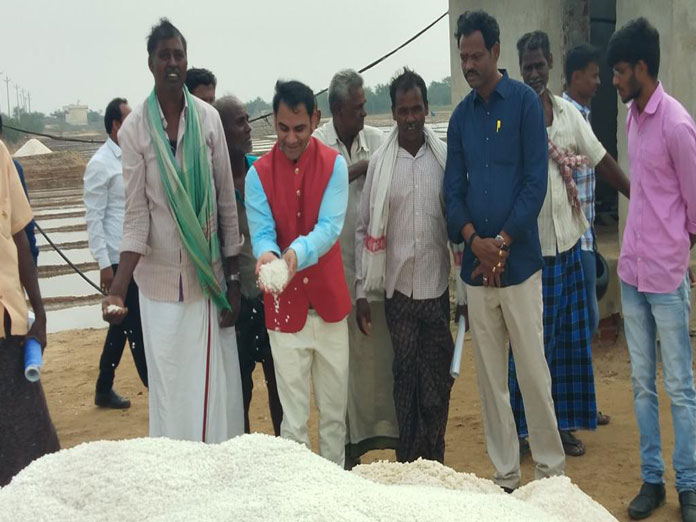Hour to strengthen salt cultivators in AP State

Most of the countries in the world are actively engaged in salt cultivation and India occupies an envious third position, next only to China and USA With 245 lakh metric tonnes of salt production, India contributes 8 per cent of global share in salt production Indian salt is penetrating globally thanks to its premier quality and improved infrastructural facilities
Srikakulam: Most of the countries in the world are actively engaged in salt cultivation and India occupies an envious third position, next only to China and USA. With 245 lakh metric tonnes of salt production, India contributes 8 per cent of global share in salt production. Indian salt is penetrating globally thanks to its premier quality and improved infrastructural facilities.
In India 60 lakh tonnes of salt is being used for human consumption and 113 lakh tonnes for industrial consumption and exporting about 50 lakh tonnes annually. Major salt producing states in India as per percentage wise are Gujarat (78%), Tamil Nadu (11%), Rajasthan (8%), Andhra Pradesh (1%), Maharashtra (1%) and Odisha (1%). In India 91 per cent of salt production is under private sector, 8 per cent under cooperative sector and only 1 per cent under public sector.
With 74 tonnes of salt production per acre, Gujarat occupies top slot in India with an average 380 kgs of salt produced per worker. Although Andhra Pradesh possesses the second largest coastal line in India and stand next to Gujarat, it remained in 4th place with an average salt yield of 14.6 tonnes per acre with an average contribution of 63.6 kgs per worker.
The major problem is lack of proper power supply to the fields and unskilled workers. Naupada in the Santa Bommali mandal of northern Andhra Pradesh district of Srikakulam is considered as the ‘Salt Bowl of AP’, followed Naupada, Moolapeta and Bhavanapadu areas and Kakinada in East Godavari and Krishnapatnam in Nellore. AP cultivated 56,000 tonnes of salt in 3,000 acres. With lowest productivity per acre, AP is lagging Gujarat and Rajasthan, though it has the second largest coastal line (970km) in the entire country.
Although the salt cultivation is on rise in AP, it is not on par with Gujarat; 25,000 acres of land is used for salt production in Andhra Pradesh with an investment of Rs 40,000 per acre. Due to power shortage, the farmers are forced to use diesel motors to pump salt water in the field and poor transport facilities is also adding to the production cost.
Farmers are unable to get at least Rs 100 for 50 kg of salt due to competition from MNCs. As a result, they are earning less than Rs 70,000 per acre. Unable to earn even Rs 10,000 per month, the salt farmers of AP are migrating to other fields. The area under salt cultivation has also declined from 10,000 acres to 2,500 acres in Srikakulam. While Gujarat, Tamil Nadu and Rajasthan are contributing 96 per cent of salt, AP shares the remaining 2 per cent of salt production along with Odisha, Maharashtra and Goa.
Dr Srinubabu Gedela completed PhD from Andhra University and post-doctorate from Stanford University. The research work is part of Pulsus Group CSR activity

